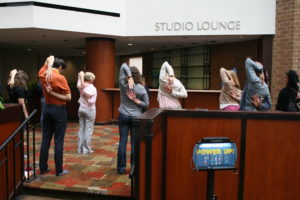What’s the state of Indiana’s health?
Unfortunately, it’s not good. In fact, Indiana ranks at the bottom in several health metrics.
One of those is opioid abuse, which has received a lot of attention recently around the state. However, Hoosiers also continue to struggle with tobacco use and obesity (and diseases related to both), as well as high infant mortality rates.
Indiana Chamber President and CEO Kevin Brinegar recently penned an article on how health is the missing piece of Indiana’s economic puzzle. For additional background and data on the issue, read it here.
The Alliance for a Healthier Indiana – made up of health care professionals, educators, business and community leaders – is aiming to educate the public and policymakers about these issues, grow local support and generally raise awareness of the dangers of our poor health, while also sharing ways Hoosiers can work together to improve these metrics.
With its State of Our Health Road Show, the Alliance is on the road this summer and fall, hosting free town hall meetings in all corners of the state.
The road show is in Fort Wayne today and will travel to Muncie tomorrow, June 13. Other June dates include Richmond on June 19 and Connersville on June 20. The complete schedule is available here; events go through October.
To see clips and video from earlier road shows, visit the Alliance for a Healthier Indiana’s Facebook page.
Founding members of the Alliance for a Healthier Indiana include the Indiana Hospital Association, the Indiana Chamber of Commerce, the Indiana State Medical Association, Anthem Blue Cross and Blue Shield of Indiana and the Indiana University Richard M. Fairbanks School of Public Health.
Brinegar and Community Health Network President and CEO Bryan Mills recently spoke about the Alliance and the state of Indiana’s health during a segment on Inside INdiana Business. The segment gives an overview of the issues:
[tube]Mtot6ez_6y8[/tube]
To learn more about the Alliance for a Healthier Indiana visit the web site at www.healthierindiana.org.










 Learn how to combine five key factors to create the perfect Formula for Wellness at your organization by attending the Indiana Health and Wellness Summit on October 3-4, presented in partnership by the Indiana Chamber of Commerce and the Wellness Council of Indiana (WCI).
Learn how to combine five key factors to create the perfect Formula for Wellness at your organization by attending the Indiana Health and Wellness Summit on October 3-4, presented in partnership by the Indiana Chamber of Commerce and the Wellness Council of Indiana (WCI).

 The ripple effects of large-scale job losses linger for years and can keep adolescents from attending college later in life, according to new research carrying significant ramifications for policy makers, college recruiters and counselors.
The ripple effects of large-scale job losses linger for years and can keep adolescents from attending college later in life, according to new research carrying significant ramifications for policy makers, college recruiters and counselors.